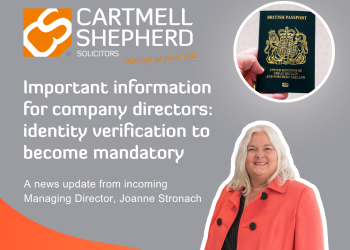How to spot signs and help back-to-work staff who are struggling
June 29th 2020By Carol Fish Director and Head of Personal Injury
Employers have been focusing on what measures they need to put in place to enable staff to safely return to workplaces as lockdown eases.
Much of the attention has been focused on signage in line with social distancing measures, one-way flows of people, and supplying sanitiser.
But some signs are not as easy to see.
It’s just as important that businesses put colleagues’ mental health and well-being at the forefront of their minds.
Employers owe a duty of care to employees to provide a safe place and system of work. This duty covers prevention of physical injury but importantly also covers prevention of psychological injury.
Some employees might have been on furlough for several weeks and they might be struggling.
They might also have other issues brought on by lockdown whether that’s childcare concerns, relationship problems, money worries, redundancy fears, there’s a lot of uncertainty for people which can lead to mental health issues, especially if they feel they don’t have control of the situation.
When it comes to entering the workplace again I am sure many of us remember our first day in a new job and how anxious we were and how exhausted we were at the end of that day.
Some people may well experience some of these feelings when they return to work.
The workplace itself is likely to have changed – and that could be a shock to the system and take a period of adjustment.
Some people may also be anxious about being in an environment where there are more people around them.
If you are an employer then good communication is key to allaying many of these fears.
It can be easy for people who are busy running their own business and trying to get the workplace ready to forget to communicate to staff what they are doing and why.
Consider conducting a staff survey on how people are feeling about going back to work and ask them to share any anxieties they have – which gives an opportunity to address those concerns in advance.
Keep people briefed of what changes there will be in the workplace, for them and work colleagues, and for any visitors.
Communicate if you expect people to wear masks or other PPE and instruct them on safe usage. Let them know that if they are coming to work on public transport they will need to wear a mask and ideally supply that in advance.
It’s also important that employers say to staff “it’s okay not to be okay”.
Give people the permission, time and space they need to talk about how they are feeling.
Be aware of returning employees’ workloads. You might be staggering staff returns, so ensure that those back in are not overloaded covering for furloughed colleagues. If they are covering others’ physical jobs make sure they are adequately trained to operate colleagues’ machinery or equipment to prevent the risk of accidents.
Employers also have a duty of care to provide a safe working environment for anyone homeworking which is something we are likely to see more of. Risk assessments must be carried out, and staff must have the appropriate equipment, including a suitable chair.
If anyone does raise any issues about suffering from stress, anxiety or any psychological or mental health issues, employers should ensure they have a system in place to deal with this and follow clear procedures. Take it seriously, document all conversations, and offer help with confidential counselling support and psychological assessment.
Please contact Carol on 01228 516666 should you require any further advice on the above.
Jonathan Lee 32West








